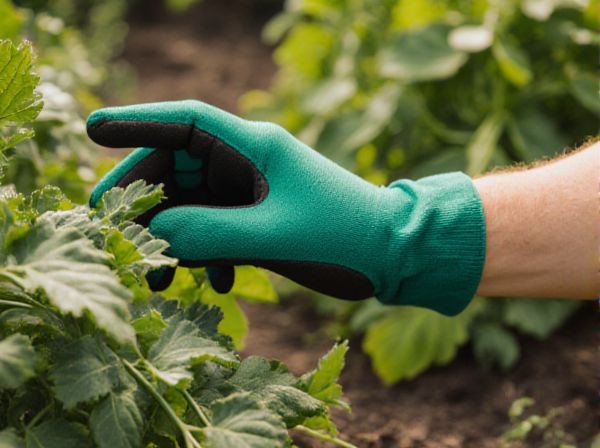
Selective Harvesting vs Clear-Cut Harvesting Illustration
Selective harvesting promotes forest sustainability by carefully choosing trees for removal, preserving biodiversity and minimizing environmental impact. Clear-cut harvesting involves removing all trees in an area, which can lead to soil erosion and habitat loss but allows for rapid regeneration and efficient timber extraction. Balancing these methods depends on ecological goals, economic needs, and long-term forest health.
Table of Comparison
| Harvest Method | Description | Environmental Impact | Economic Efficiency | Sustainability |
|---|---|---|---|---|
| Selective Harvesting | Selective removal of mature trees, preserving overall forest structure. | Minimizes soil erosion, maintains biodiversity, and protects wildlife habitats. | Moderate costs with consistent long-term timber yield. | High sustainability through continuous forest regeneration. |
| Clear-Cut Harvesting | Complete removal of all trees in a designated area at once. | Increases soil erosion, disrupts ecosystems, and reduces habitat diversity. | Lower short-term costs but potentially unstable timber supply. | Lower sustainability; requires longer recovery periods. |
Introduction to Harvesting Methods in Gardening
Selective harvesting in gardening involves carefully choosing specific plants or branches to prune or harvest, promoting plant health and sustained growth. Clear-cut harvesting removes entire sections of vegetation, which can lead to soil erosion and reduced biodiversity but allows for rapid regeneration and easier management. Understanding these methods helps gardeners balance productivity with ecosystem vitality, optimizing garden sustainability.
Defining Selective Harvesting
Selective harvesting is a sustainable forestry practice that involves carefully choosing specific trees to cut while leaving the surrounding forest intact, promoting biodiversity and forest regeneration. Unlike clear-cut harvesting, which removes all trees in a designated area, selective harvesting minimizes environmental impact by preserving habitat structure and maintaining soil quality. This method supports ecological balance and long-term forest health by targeting mature or diseased trees for removal while protecting younger growth and sensitive species.
Understanding Clear-Cut Harvesting
Clear-cut harvesting involves removing all or most trees from a designated area, creating an open space that promotes the growth of sun-loving species and simplifies reforestation. This method can lead to increased soil erosion and habitat disruption, affecting biodiversity and ecosystem stability. Clear-cut areas often require careful management to mitigate negative environmental impacts and support sustainable forest regeneration.
Key Differences Between Selective and Clear-Cut Harvesting
Selective harvesting targets specific tree species and mature trees, promoting biodiversity and forest regeneration by leaving younger trees intact. Clear-cut harvesting removes all trees in a designated area, leading to faster timber production but causing greater disruption to ecosystems and soil stability. The choice between methods impacts forest sustainability, wildlife habitats, and long-term economic returns in forestry management.
Environmental Impacts of Selective Harvesting
Selective harvesting minimizes environmental disruption by preserving biodiversity and maintaining forest structure, which supports wildlife habitats and soil stability. This method reduces the risk of soil erosion and water quality degradation compared to clear-cut harvesting. Maintaining a continuous canopy also enhances carbon sequestration and promotes long-term forest resilience.
Ecological Effects of Clear-Cut Harvesting
Clear-cut harvesting significantly disrupts local ecosystems by removing all trees within an area, leading to habitat loss and reduced biodiversity. This method increases soil erosion and nutrient runoff, negatively impacting water quality and aquatic habitats. The abrupt change in microclimate conditions also affects species composition and forest regeneration patterns, often favoring early successional species over mature forest communities.
Yield and Productivity: Selective vs. Clear-Cut
Selective harvesting maintains continuous forest cover, promoting sustained yield by preserving seed trees and soil structure, which enhances long-term productivity. Clear-cut harvesting maximizes short-term yield by removing all biomass, but can lead to soil degradation and reduced regeneration rates, negatively impacting future productivity. Studies indicate selective methods often result in more stable carbon sequestration and biodiversity, contributing to ecosystem resilience and sustained forest productivity over multiple harvest cycles.
Long-term Garden Sustainability Considerations
Selective harvesting promotes long-term garden sustainability by preserving soil quality, enhancing biodiversity, and maintaining ecosystem balance through the careful removal of mature plants while leaving younger growth intact. Clear-cut harvesting, although efficient for short-term yield, disrupts soil structure, increases erosion risk, and reduces habitat diversity, negatively impacting garden resilience over time. Emphasizing selective harvesting techniques supports continuous regeneration and sustainable productivity within garden ecosystems.
Best Practices for Effective Selective Harvesting
Selective harvesting enhances forest health by carefully choosing mature trees for removal, preserving biodiversity and maintaining ecosystem stability. Employing precise inventory methods, monitoring tree growth, and minimizing soil disturbance are critical best practices that ensure sustainability and productivity. Integrating spatial planning with regular assessments fosters optimal regeneration while protecting wildlife habitats and promoting long-term forest resilience.
Choosing the Right Harvesting Method for Your Garden
Selective harvesting promotes biodiversity by removing only mature or diseased plants, preserving the overall health of your garden. Clear-cut harvesting can be effective for quick removal of overgrown or heavily infested areas but risks soil erosion and loss of beneficial organisms. Choosing the right harvesting method depends on your garden's size, plant diversity, and long-term sustainability goals.
Selective Harvesting vs Clear-Cut Harvesting Infographic

 gardendif.com
gardendif.com